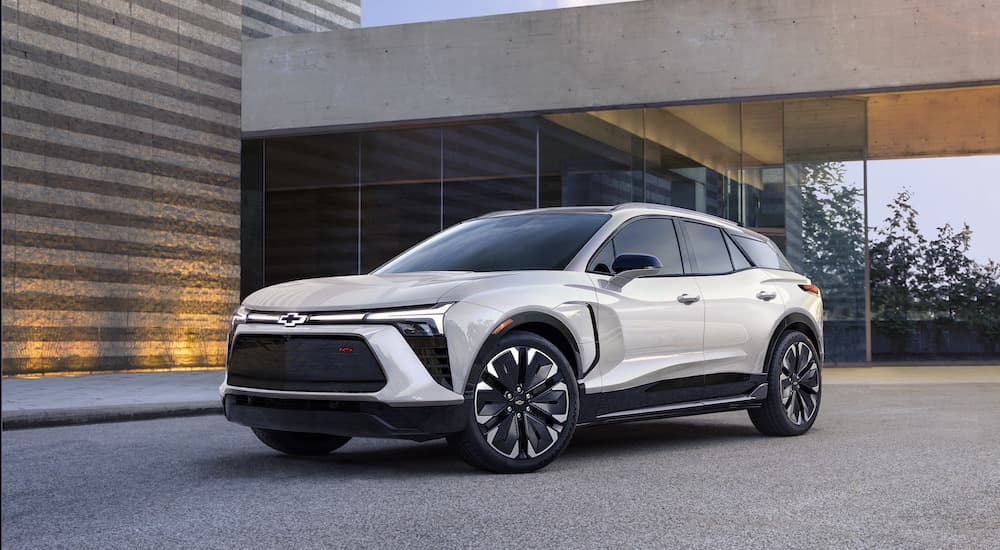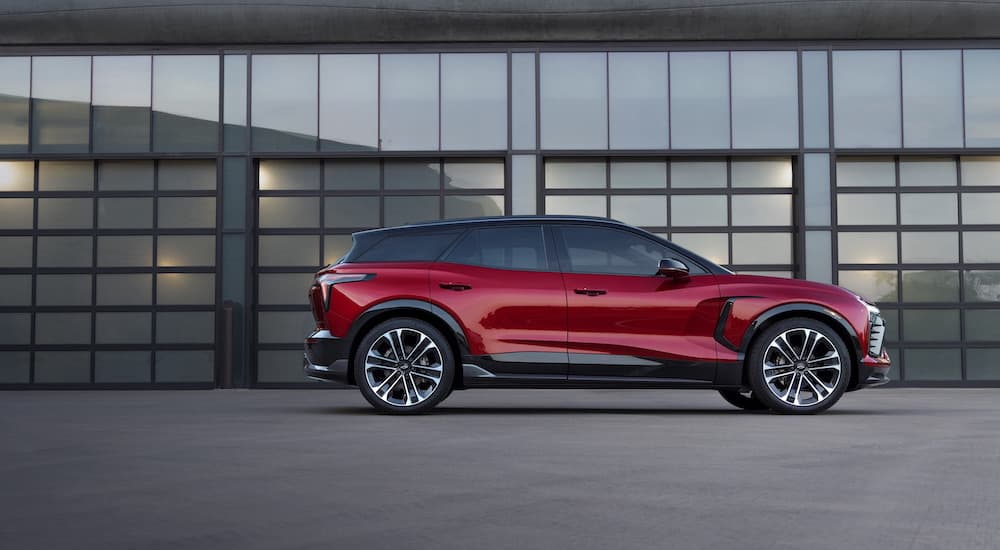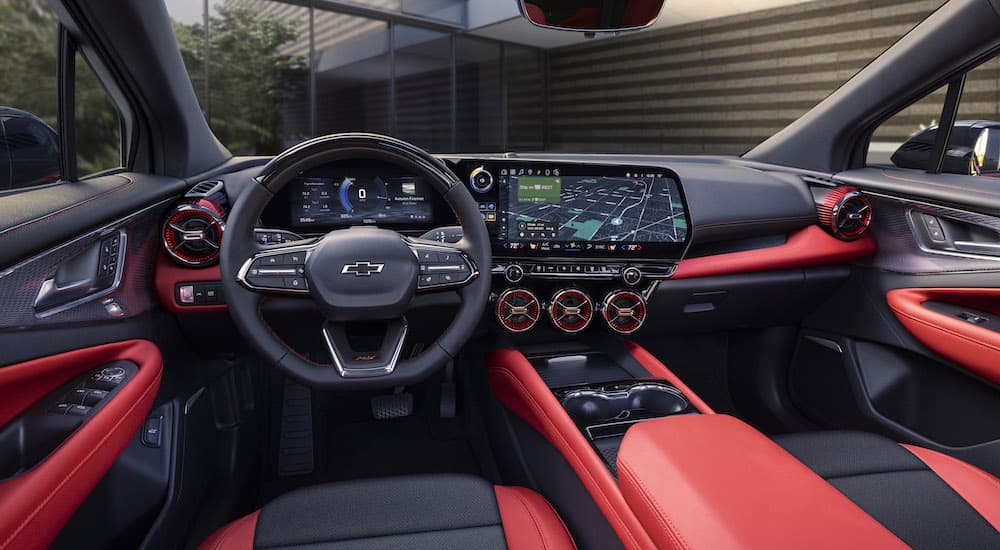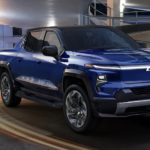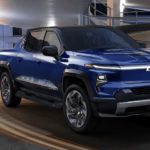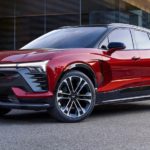Slowly but surely, more models from esteemed manufacturers are trying their hand in the realm of EVs. Chevy’s first foray into electric vehicles began with the launch of the Bolt EV, followed by the Bolt EUV a few years later. Now, we’re seeing the list of Chevy EVs grow once again with the introduction of the 2024 Chevy Blazer EV. The Blazer is a well-known mid-size SUV, which more recently has utilized fuel-efficient powertrains that are also amply performant. The Blazer is also known for decent towing capacity, especially for a mid-size SUV, and on top of that, it’s spacious to boot. All these impressive specs beg the question for many drivers: what will the 2024 Chevy Blazer EV bring to the table?
It’s been confirmed that the 2024 Blazer EV will cost more than its non-EV counterpart; however, this isn’t anything new when a pre-existing automobile gets the EV treatment. For example, the Ford F-150 Lightning accompanies the F-150, with the former costing a significant amount of money more than the non-EV pickup truck. As I’ll soon discuss, the extra cost of the Blazer EV isn’t because of its electric power but because it slates to be more than meets the eye.
Chevy has a golden opportunity to bring its lineup of SUVs into the fray of electric vehicles, and the Bolt EUV was the first step to achieving this goal. Now, the Blazer EV will bring a mid-size SUV into the mix, and the anticipation surrounding its potential success is as potent as the hype surrounding its launch. There has also been confirmation of more Chevy SUVs entering the EV market, such as its mid-size model, the Equinox, but that’s a story for another day. For now, let’s discuss why people should be looking forward to the 2024 Blazer EV.
Performance: It’s Quite a Ride
The 2024 Blazer EV will provide a much different ride from its gasoline-powered counterpart. Driving an electric vehicle feels unique, especially compared to your average automobile. The difference comes down to a lack of transmission, lending itself a smooth feeling of acceleration. Instead, driving an electric vehicle feels more like operating a go-kart, in the simplest terms. Chances are you’ve heard of this type of transmission before, referred to as a Continuously Variable Automatic Transmission (CVT). The gasoline-powered Blazer utilizes a turbocharged 2.0L I-4 engine or a 3.6L V6 engine, both paired with a 9-speed automatic transmission. At its best, the 2023 Blazer produces 308 hp and 270 lb-ft of torque courtesy of the 3.6L V6 engine, and it’s unconfirmed yet if this will change for the 2024 model year.
What we do know about the 2024 Chevy Blazer EV’s performance is it produces up to 557 hp. If the regular Blazer’s powertrains remain the same for next year, the Blazer EV creates a stark 80.8% increase in horsepower over its gasoline-powered equivalent, not to mention the mere four seconds it takes to get from 0 to 60 mph. With the options of AWD and FWD, the Blazer EV is looking to be a worthy contender for more than commuting but perhaps light off-roading too. Everything we’ve seen hints toward the Blazer EV truly bringing something unique to the table with its performance. However, a question on other people’s minds is: how much money will drivers save without the need for fuel?
Saying Goodbye Isn’t Always Hard
Saying goodbye isn’t always hard; by that, I mean those often hefty fuel costs and dreaded gas station trips. That’s not to say people can’t ever visit a gas station—after all, who doesn’t like coffee, cheap hot dogs, and lottery tickets? Where the benefits lie comes down to the money and the time people will save without needing constant gas station trips. However, if you’re spending equal or more time charging up an EV, it’s not a good trade-off. With the discussion of fuel economy ratings and mileage ranges, will the 2024 Blazer EV bring anything to the table? It would appear so, with Chevy claiming its most energy-saving battery configuration can travel 320 miles on one full charge. When talking about fast charging, the Blazer EV is no different from other Chevy vehicles, meaning charging can be relatively fast, depending on the type of charger the driver uses.
The 2023 Blazer, when paired with its 3.6L V6 engine, achieves a respectable mileage range of 427 miles. Not bad, but the question remains: is 33% more mileage per full tank worth it when you have to spend money to get your vehicle going in the first place? Considering the regular Blazer utilizes a 19.4-gal fuel tank, drivers will be spending a chunk of change to fill the tank, potentially every week or sooner. Like any other EV, the Blazer EV can charge at times drivers aren’t using the vehicle, such as when they’re sleeping at home or while shopping, as more shopping centers are installing charging stations regularly. If that’s not game-changing, then I don’t know what is.
Ahead of Its Time, or Right on Time?
The Chevy Blazer received noticeable improvements with the 2023 model year, but the 2024 Blazer EV is shaping to be a step up. The 2023 Blazer launched with a slew of new technology, and for its price tag, it’s one of the strongest showings a manufacturer can do for a mid-size SUV. For example, infotainment centers can make or break a vehicle’s multimedia experience nowadays. Chevy has upgraded the Blazer for every 2023 model to sport a 10-inch touchscreen: a noticeable jump from the already respectable 8-inch screen in models prior.
All Chevy had to do for the Blazer EV was match the Blazer’s array of tech. Instead, the Blazer EV got an even more robust infotainment center with a massive 17.7-inch canvas to display crucial information like navigation and other integrated apps. The 17.7-inch screen is 77% larger than the Blazer’s current screen size. The Blazer EV will have both wireless Apple CarPlay and Android Auto, much like the gasoline-powered Blazer gets. Additionally, wireless phone charging is present, and a fully-fledged 4G LTE Wi-Fi hotspot allows drivers and passengers to connect to fast and secure internet on their wireless devices wherever they are. The Blazer EV brings much to the table with its impressive showing of technology, especially with its lack of wires needed to enjoy the experience.
Super Cruise: Rapidly Picking Up Pace
The Bolt EUV brought forth the first showing of Super Cruise. Super Cruise is a feature letting drivers relieve their hands by allowing them to take them off the wheel, along with their feet off the pedals, and casually let the vehicle take over acceleration, braking, and slight turns. The assistive driving Super Cruise provides is akin to autonomous driving; however, the driver should keep a close eye on their surroundings while utilizing the feature, as it’s not fully automated. Not every street allows for Super Cruise, but thousands of roads in the United States are currently on the list of compatible roads, and this list keeps growing. The list of streets and freeways on the compatibility list makes up over 200,000 miles of drivable roads with Super Cruise, and more is sure to follow.
When the driver is on one of these roads, the steering wheel will illuminate a green bar, which indicates Super Cruise is ready to be activated. Features such as Super Cruise are ones I hoped to see in more Chevy vehicles moving forward, and the Blazer EV will be the latest offering to include it. Super Cruise is the future, which is a fitting match with the Blazer EV, as electric cars are undoubtedly the future, especially if they keep making strides like this.
The 2024 Blazer EV Is Coming and It’s Ready to Make Its Mark
While the Blazer EV is certainly not the first all-electric SUV to debut in the growing EV market, Chevy is making sure the Blazer EV turns heads when it debuts in the summer of 2023. No longer being a slave to the pump is obviously one of, if not the main reason, to consider this vehicle, but with so many EVs on the market, what makes the Blazer EV stand out? Perhaps that answer lies in its details. Although it’s already equipped with impressive power and great range, features like the monstrous 17.7-inch infotainment touchscreen and the available Super Cruise hands-free driving technology may give it an edge over its EV competitors. We may not know what lies ahead for this vehicle, but it will undoubtedly make an impressive introduction and will have the attention of the all-electric market for the foreseeable future.
